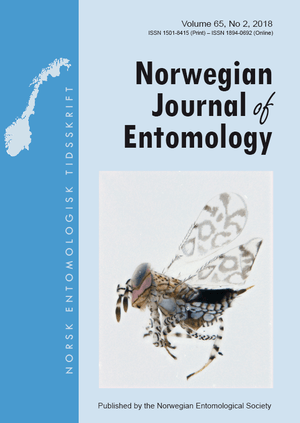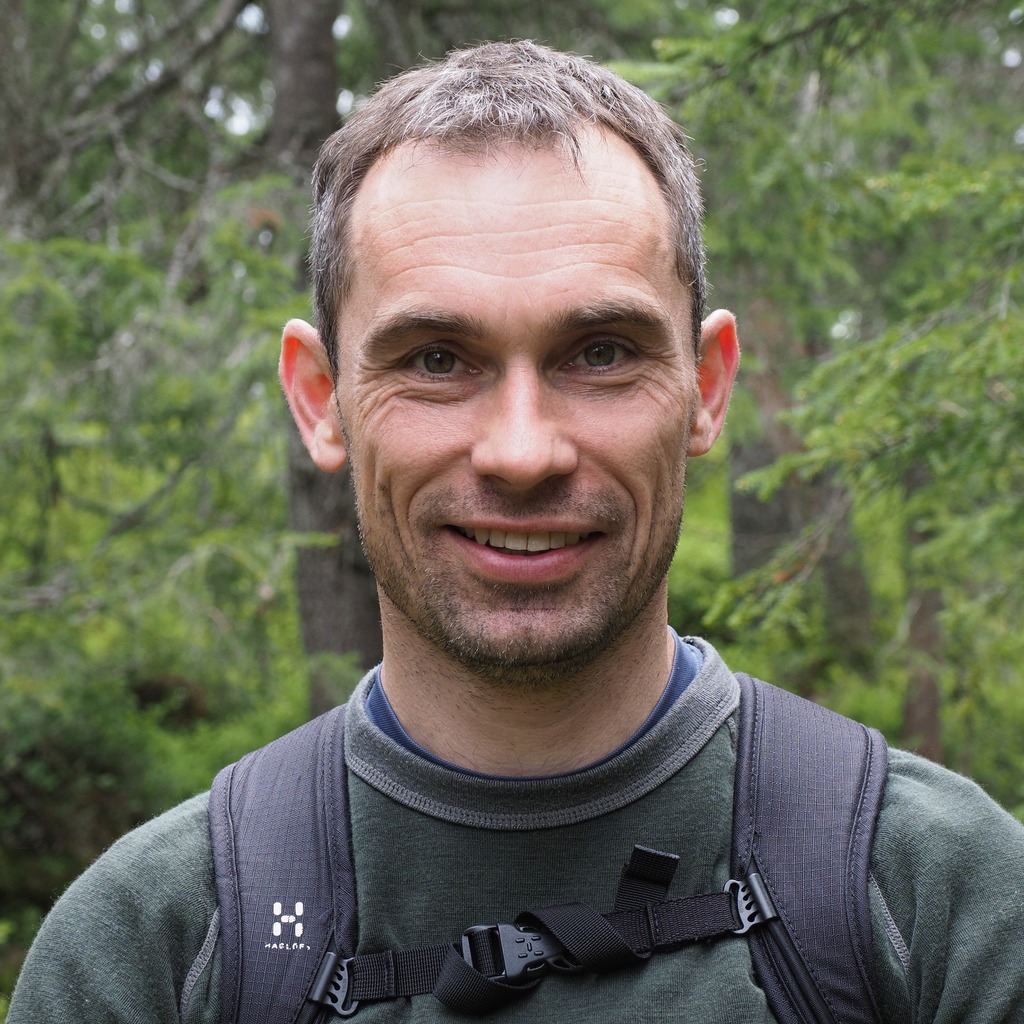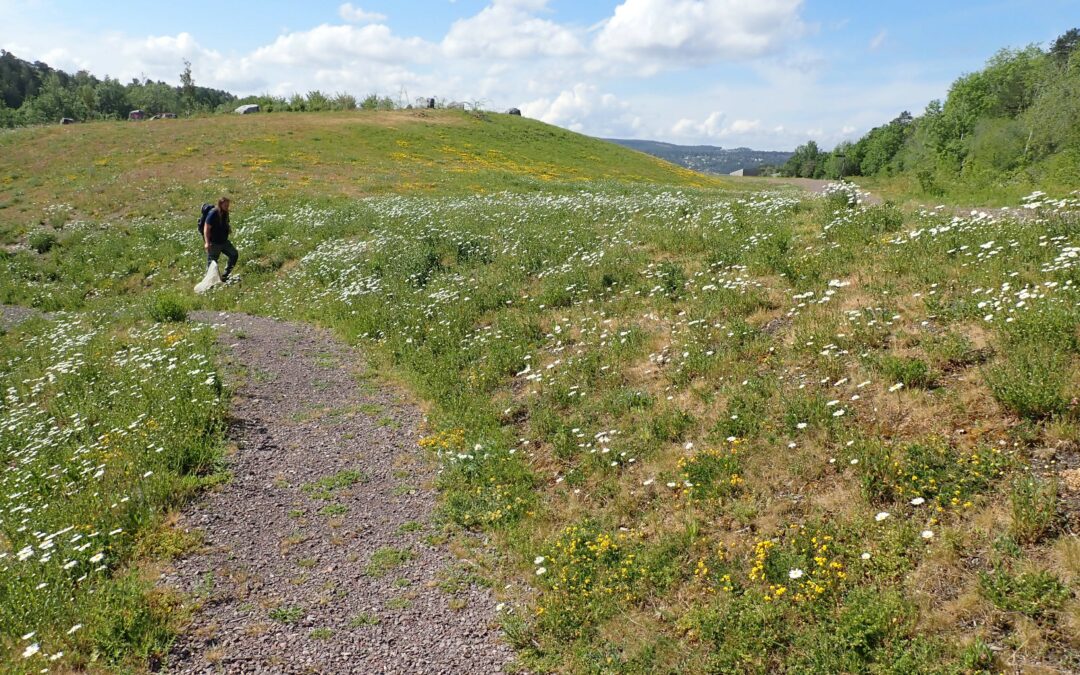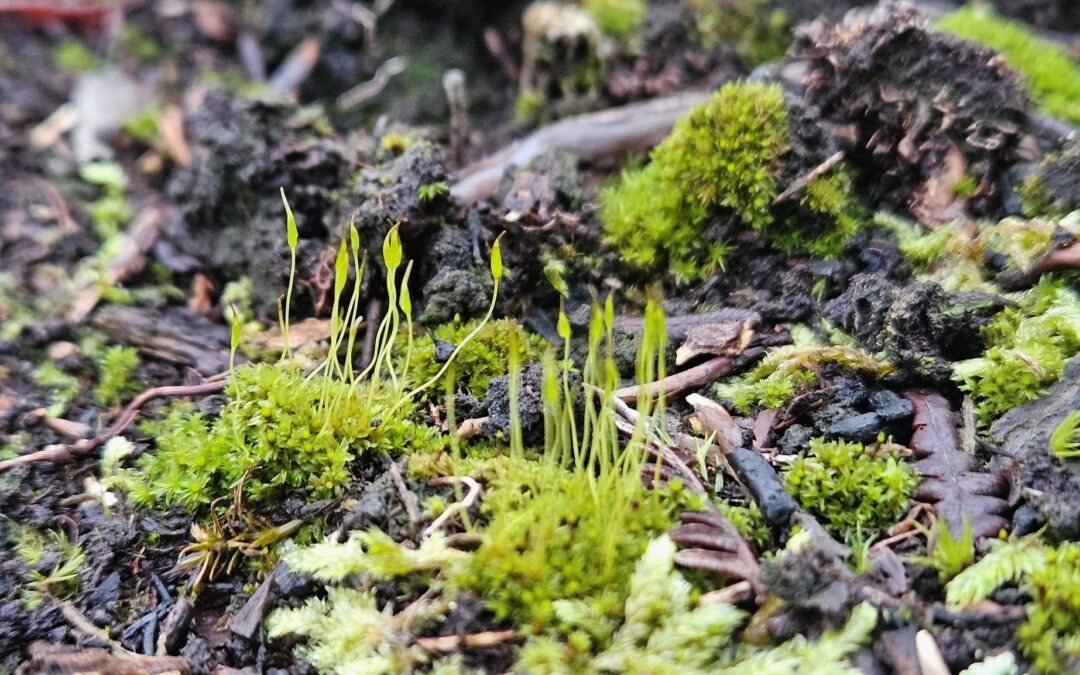Et nytt nummer av tidsskriftet (vol. 65 nr. 2) ble trykket 14. desember 2018. I dette nummeret kan man lese om parasittvepsen Marietta picta (André, 1878) som for første gang er rapportert fra Norge. Dette er et fantastisk vakkert insekt som også kan sees på omslaget til denne utgaven av tidsskriftet. Trond Andersen beskriver en ny art av fjærmygg for vitenskapen – Macropelopia (Bethbilbeckia) chilensis. Denne arten er som navnet tilsier fra Chile i Sør-Amerika. Løpebillen Leistus rufomarginatus (Duftschmid, 1812) rapporteres for første gang fra Norge. Det samme gjelder ti nye arter av midd. Lars Ove Hansen og George Japoshvili publiserer sin syvende artikkel som omhandler vepsefamilien Encyrtidae i Norge. Sigmund Hågvar publiserer en artikkel som bidrar til å forstå økologien hos kortvingen Gyrophaena boleti (Linnaeus, 1758) bedre. Gunnar M. Kvifte og Terje Jonassen publiserer de første funnene fra tovingefamilien Opetiidae i Norge. Man kan også lese om Cimex pipistrelli komplekset og nye funn av teger i familien Cimicidae. Dette nummeret gir også en oversikt over funn av arter i tovingefamiliene Limoniidae og Pediciidae i Norge, med 40 nye arter for landet. Denne artikkelen gir også en oppdatert sjekkliste for disse familiene for Norge, Sverige, Finland, Danmark og Island. Til sist presenteres nye funn av billene Cleopomiarus distinctus Boheman, 1845 og Stricticollis tobias Marseul, 1879.
Årets andre utgave av tidsskriftet vil også bli tilgjengelig for nedlasting på www.entomologi.no innen kort tid.
Oversikt over artikler publisert i Norwegian Journal of Entomology 65-2:
—
Hansen, L.O. & Olsen, K.M. 2018. The aphelinid freak Marietta picta (André, 1878) (Hymenoptera, Aphelinidae) recorded in Norway. Norwegian Journal of Entomology 65, 81–84. (last ned artikkel)
The aphelinid Marietta picta (André, 1878) (Aphelininae) is recorded from Aremark municipality in Østfold county [Ø], Norway in 2017. This represents the first record of the genus in Norway. The species is very easily recognizable with almost panther shaped patterns, and may be considered as a freak compared with other Norwegian aphelinids. Biology and distribution of the species are briefly given, together with an illustration. This increases the number of aphilinid species in Norway to 23.
—
Andersen, T. 2018. Macropelopia (Bethbilbeckia) chilensis n. sp. (Diptera, Chironomidae) from Cajón del Maipo, Chile. Norwegian Journal of Entomology 65, 85–90. (last ned artikkel)
Macropelopia (Bethbilbeckia) chilensis n. sp. is described and figured based on pharate male pupae and pupa exuviae collected in the Andes Mountains east of Santiago, Chile, in 1998 and 1999. The pupa possesses the large, spine-like D1 setae arising from prominent tubercles on tergites II–VII, characteristic for the subgenus Bethbilbeckia Fittkau & Murray, 1988. However, the thoracic horn is more similar to the thoracic horn in some Macropelopia (s. str.) Thienemann, 1916 species than in the only other species in the subgenus, M. (B.) floridensis Fittkau & Murray, 1988. The male can easily be separated from the male of M. (B.) floridensis by having bi- to multiserial orbitals and a strong comb on the hind leg, characters that are found in Macropelopia (s. str.) but not in M. (B.) floridensis, indicating that the status of Bethbilbeckia as a separate subgenus should be reconsidered.
—
Aleksandr V. Putchkov, A.V. & Markina, T.Yu. 2018. Leistus rufomarginatus (Duftschmid, 1812) (Coleoptera, Carabidae, Nebriini) – ground beetle new to Norway. Norwegian Journal of Entomology 65, 91–93. (last ned artikkel)
Leistus rufomarginatus (Duftschmid, 1812) (Coleoptera, Carabidae) is recorded in Southern (Sandnes, Rogaland) and South-western Norway (northern part of Bergen env., Hordaland) for the first time. Thus, the known area of the species is expanded up to 60 degrees north latitude. Appearance of L. rufomarginatus in Norway can be associated with both the importation of plants with substrate to the country or the quite natural migration. This expansion is most probably caused by the climate warming, accompanied with mild winters in recent decades. The locality and ecology of the species are briefly discussed.
—
Bolger, T., Devlin, M. & Seniczak, A. 2018. First records of ten species of Mesostigmata (Acari, Mesostigmata) added to the published Norwegian species list. Norwegian Journal of Entomology 65, 94–100. (last ned artikkel)
The Mesostigmata occurring in aboveground microhabitats in two Norwegian woodlands were surveyed which revealed ten species new to Norway’s fauna: Cilliba cassidea (Hermann, 1804), Zercon lindrothiLundqvist & Johnston, 1986, Holoparasitus inornatus (Berlese, 1906), Lysigamasus armatus Halbert 1915, Paragamasus alstoni (Bhattacharyya, 1963), Paragamasus integer (Bhattacharyya, 1963), Pergamasus longicornis (Berlese, 1906), Macrocheles dentatus (Evans & Browning, 1956), Macrocheles opacus (Koch, 1839) and Macrocheles submotus Falconer, 1924. This paper presents details of these new records and comments on the known distribution of the species.
—
Hansen, L.O. & Japoshvili, G. 2018. New records of Encyrtidae (Hymenoptera, Chalcidoidea) from Norway VII. Norwegian Journal of Entomology 65, 101–107. (last ned artikkel)
The study of the family Encyrtidae at the Natural History Museum of Oslo continues. In this revision, eight species are reported for the first time from Norway, bringing the total number of Norwegian encyrtids up to 151. Bothriothorax koponeni Khlopunov, 1984 is reported for the first time outside Finland, and Syrphophagus subviridis (Hoffer, 1970) for the first time outside Slovakia. Until now, Isodromus limosusHoffer, 1969 has only been reported from Bohemia in the Czech Republic and Kostroma Oblast in Russia, while Copidosoma aretas (Walker, 1838), Lamennaisia nobilis Nees, 1834, Leptomastix epona (Walker, 1844), Psyllaephagus abbreviatus (Hoffer, 1963) and Syrphophagus aphidivorus (Mayr, 1876) are all recorded from Norway for the first time. New records are given for Anagyrus belibus (Walker, 1837), Bothriothorax clavicornis (Dalman, 1820), Encyrtus albitarsis Zetterstedt, 1838 and Tetracnemoidea piceae(Erdös, 1946). Pseudencyrtus idmon (Walker, 1844) and Sectiliclava cleone (Walker, 1848) are recorded for the first time since Francis Walker (1809–1874) collected the types during his visit to Finnmark in 1836. Comments on the biology and distribution for the species are given. The aim of this ongoing study is to highlight the distribution of the family in Norway and finally provide a check-list of the Norwegian species.
—
Hågvar, S. 2018. Contribution to the ecology of Gyrophaena boleti (Linnaeus, 1758) (Coleoptera, Staphylinidae) breeding in the pore layer of the fungus Fomitopsis pinicola (Fr.) Karst. Norwegian Journal of Entomology 65, 108–114. (last ned artikkel)
The small staphylinid beetle Gyrophaena boleti (Linnaeus, 1758) can be found numerously on the pore layer (hymenium) of the perennial bracket fungus Fomitopsis pinicola (Fr.) Karst. Up to 400 beetles have been observed on a single fruiting body (sporocarp). The slender larvae live inside the narrow pores. In a spruce-dominated forest near Oslo, the phenology of G. boleti was studied during several years. A rapid colonisation of adult beetles in May was well synchronized with a short sporulation period of the fungus. Then followed a long egg-laying period, extending for weeks even after the sporulation had ceased, resulting in a mix of larval stages. Within a single sporocarp, all three stages could occur together, and different sporocarps could have different distribution patterns of larval stages. A few adults and larvae were observed as late as medio August. Earlier studies have assumed that adults and larvae are spore eaters, and this may be the case during 1–2 weeks of spore production. However, the main activity period of adults and larvae was after sporulation had ceased. Guts of adults and larvae in this period were free from both spores and hyphae, but contained a grey, fine-grained matter similar to that lining the inner part of the hymenium pores. Adults were too thick to enter the pores, but often put their head into them. The special, comb-like mouthparts of adults and larvae, which are assumed to sample spores during sporulation, are probably also useful to scrape this fine-grained matrix from the inner wall of the pores. Adults used only sporocarps with a water content of minimum 30–40 %, and summer drought was a threat to both adults and larvae. Even small sporocarps could harbour many beetles, if the water content was acceptable.
—
Kvifte, G.M. & Jonassen, T. 2018. First record of the family Opetiidae from Norway (Diptera, Brachycera, Platypezoidea). Norwegian Journal of Entomology 65, 115–117. (last ned artikkel)
Material of Opetia nigra Meigen, 1830 is reported from six localities in three counties from Norway: Hedmark, Hordaland and Rogaland. This represents the first documented records of this species and the family Opetiidae from Norway. A DNA barcode and a habitus photograph are presented to facilitate for easy identification of the species in the future.
—
Roth, S., Coulianos, C.-C., Vinnersten, T.P. & Roligheten, E. 2018. Cimex pipistrelli complex new to Norway and additional records of bed bug species (Cimicidae, Heteroptera) from Norway and Sweden. Norwegian Journal of Entomology 65, 118–126. (last ned artikkel)
Cimex pipistrelli complex is recorded for the first time from Norway. Recent records of Cimex pipistrellicomplex and of Cimex hirundinis (= Oeciacus hirundinis) Lamarck, 1816 are presented for Norway and Sweden. Species occurrence, species status and taxonomy of European Cimicidae are discussed with respect to Northern Europe.
—
Olsen, K.M., Osterbroek, P., Boumans, L. & de Jong, H. 2018. Forty species of limoniid craneflies new to Norway, with an annotated list of Nordic Pediciidae and Limoniidae, including distributional data (Diptera, Tipuloidea). Norwegian Journal of Entomology 65, 127–174. (last ned artikkel)
This paper presents forty species of limoniid craneflies as new to the Norwegian fauna, and include also an updated and annotated checklist of species occurring in Norway, Sweden, Finland, Denmark and Iceland. For Norway, distributional data are given according to Strand regions. Comments are given on some species with doubtful records from Norway.
—
Steinert, M., Sydenham, M.A.K., Eldegard, K. & Moe, S.R. 2018. New records of Cleopomiarus distinctus Boheman, 1845 (Coleoptera, Curculionidae) and Stricticollis tobias Marseul, 1879 (Coleoptera, Anthicidae) from Norway. Norwegian Journal of Entomology 65, 175–182. (last ned artikkel)
Two new beetle species for Norway were recorded from field surveys in power-line clearings located in predominantly forested areas in Southeastern Norway; Cleopomiarus distinctus Boheman, 1845 (Curculionidae), and Stricticollis tobias Marseul, 1879 (Anthicidae). A total of 81 specimens of the weevil C. distinctus, were found across four sites in Buskerud over the course of three years (2013–2015). C. distinctus has never been recorded in Scandinavia previously. Three specimens of the ant-like flower beetle S. tobias, were found at two sites in Hedmark in 2015. S. tobias has a wide distribution in other Nordic countries and has been recognized as a “doorstep-species” to Norway from Sweden. The biology of the two species are presented and the potential distribution of the species are discussed.




